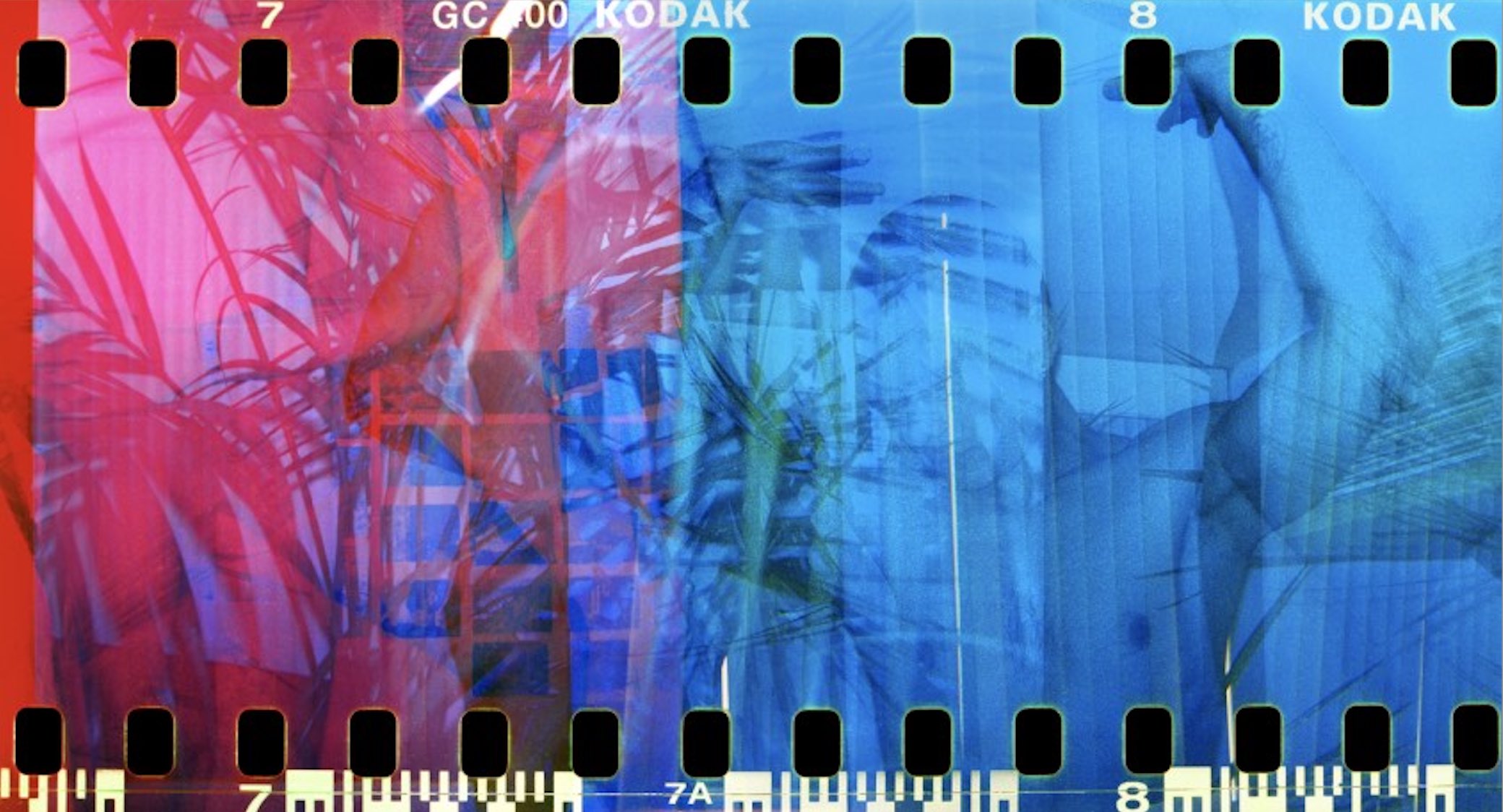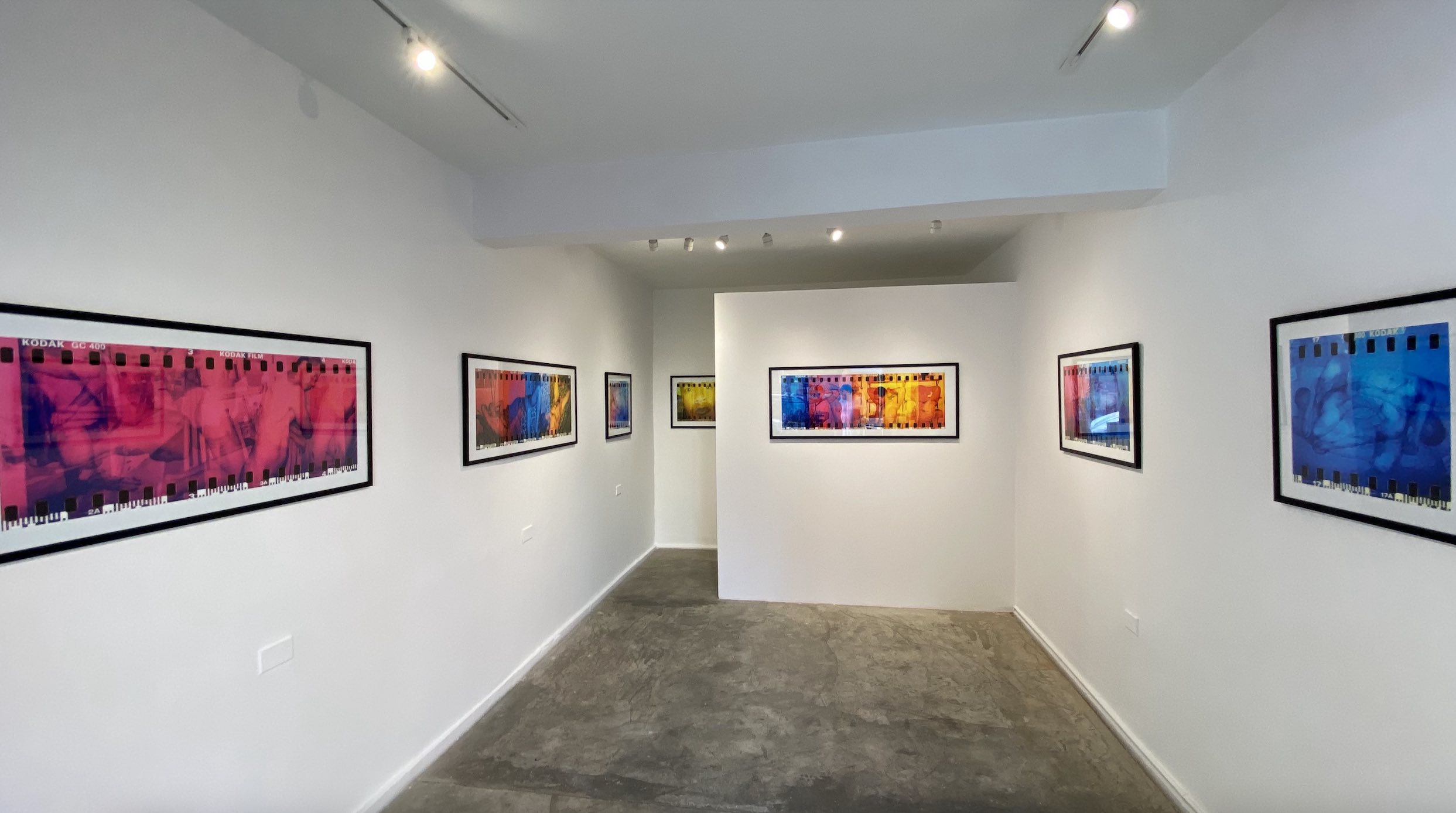
Essay
Other Questions Appear When (Visual) Images Do: Alan Balthazar
by Alí Cotero
At Salón Silicón
Reading time
4 min
The Luminous Conjuration in the Domestic Context
Each departure/arrival to another territory implies a rearrangement of affects from there to here, recognizing (oneself) in the uprooting and rooting. Perhaps we simply cannot know the most intimate reasons why one day Alan Balthazar (originally from Tamaulipas, 1988-2017) left their place of upbringing in order to place their body, desires, and dreams in Mexico City’s nascent queer night scene, where they performed their fervor for creative life until the day of their death, due to complications from HIV.
Nor will we ever know what their perception would have been of an overwhelming fact: today, other bodies are opening up their archive, exhibiting their work, writing about their existence, while their body has departed. I am referring to El deseo opaca la luz (Desire Dims the Light), the exhibition that Salón Silicón has dedicated—while relying on the optics of the unprecedented—to their work as a photographer. A kind of peek into their affective archive, translated into visual images containing landscapes belonging to the domestic context, of eroticized body gestures between the light resting on objects as well as the shadows hidden in the folds of Edmundo Rivas’s skin.

Why does the system continue replicating death as an event meant to recognize the work done in life, instead of caring for the lives of vulnerable bodies? What would Alan think of their artistic work (at that time a box of objects, memories, and affects) being deposited at the site of an archive? An inevitable ethical question arises in two aspects—that of the public and that of the private—namely, how does one appeal to care in this argumentation?
In addition to their work, what comes to us today from Balthazar is their description. Laos Salazar says that “they were recognized as an iconic figure […] as an actress, performer, model, and DJ: facets always developed alongside their passion for analog cameras, which led them to produce a fair number of images,” and that what is presented at Silicón is an assembly that locates a “series of photograms from the same negative, onto which Alan made multiple exposures, using a true experimental lighting and color study.”
In addition to the images, the show attends to the logic of their diary, at the domain alanbalthazar.tumblr. This is how dates, images, clues, and traces reach us, ones that have survived in their publications about the displacements of/in their different corporealities.
El deseo opaca la luz is the gallery’s first foray into queer archives. This exploration was based on conversations between Laos Salazar and Pepx Romero, which took place in 2020. Additionally, the archive is searchable: it is currently in a state of assembly, since its organization is a long-term task.

The Appearance of Other Questions
Exploring the archive of a person who has died generates anxieties, questions, illusions, disappointments, worries, sensitivities, and desires. All of this from a feeling/thinking that continues under secrecy and that will eventually be made public. “One has to look at the archive with suspicion,” says Mag de Santos, who is part of Río Paraná (a group of trans visual artists from the south).
We archive managers, here and alive, are concerned with some of the questions raised under that suspicion. How can we interpret appearances of the desires and wills of the archive’s owner? How are we to superimpose narratives that range from the affective, through the political, and even in some cases the economic? What function does the archive have when it begins circulating in exhibition circuits? In the case of Balthazar, in confronting their archive, would exploring it have to be an individual or a group affair?
For artistic practice, an archive is a place to verify/constellate (ideally, together) affects, relationships, links, intellectualities, and affinities: in this way we can better understand the creator’s processes. At the same time, the possibility of reinterpreting their work is opened up, taking into account the perception of those who in that place excavate out of the repressed, the private, the diverted, and the destroyed.
It is also important to rework constantly the very concept of the archive in terms of the market, as well as in terms of the legal and institutional framework, since another suspicious question arises: Which bodies benefit/affect your operations in the commercial circuit? I insist: What would be a way—if we may ask ourselves this—of experimenting, digging, and exploring in an archive when the natural body that held it is no longer present?
Published on March 3 2022